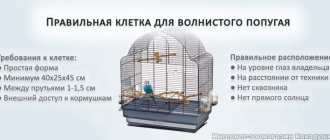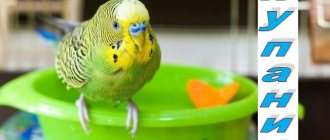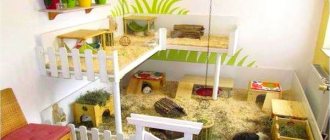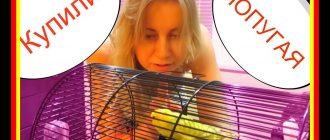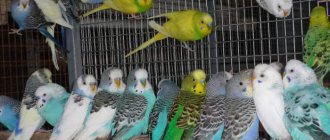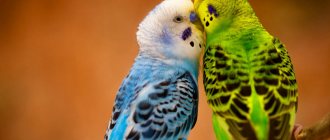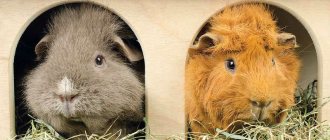A budgie often becomes the first pet in a person's life. These unpretentious and very sociable birds teach children how to treat animals carefully and responsibly, and often surprise adults with their gullibility and intelligence. But, being natives of distant Australia, these motley pichugas, even after years of selection, require special conditions of detention. In this article we will talk about arranging a home for a budgerigar and provide visual photos. It is in the cage that he will spend most of his life, and therefore, in addition to food and water, it should have everything necessary so that the smart pet does not get bored or get sick.
Where to put the cage
The main enemies of wavy in an apartment are drafts, overheating, smoke, toxic fumes, lack of light, radiation and vibration from household appliances, noise, sharp flashes of light, as well as some pets. And if the lack of lighting is easily solved by installing a special lamp for birds, then other factors must be taken into account when installing the cage.
Under no circumstances should you place your parrot on a refrigerator, desktop, or near a TV or radio; the distance to the nearest electrical appliance should be at least 1 meter. Avoid placing the cage near windows and walkways, and do not place the bird on a windowsill where it can get cold or overheat. Place the bird away from aroma lamps and the heating system - dry air reduces the pet's immunity and quality of life, and most essential oils are unsafe for the parrot. Another dangerous place for wavy fish is the kitchen. In addition to traumatic household appliances, which the bird will certainly sit on when it gets out of the cage by accident or with your help, the parrot will be exposed to toxic fumes from Teflon, smoke from burnt food and other unwanted particles.
The parrot's house can be placed on a special stand or shelf, on suitable furniture, or even hung on a reliable hook, provided that the cage is heavy enough so as not to swing. The surface under the pallet should be flat, and the bird house should not wobble on it.
Popular sections:
Aquariums Sale of kittens and puppies Terrariums Products for cats Products for dogs
Remember that smoking near the cage is strictly prohibited, even a weak concentration of smoke in the air can kill the bird if inhaled regularly. Not only cats and rats, but also other rodents and lagomorphs can harm a budgie. Remember that they have some diseases (mycoplasmosis, coccidiosis) in common, and the presence of hay near the parrot increases the risk of aspergillosis. Excessively active pets and birds of prey should also be kept in another room so as not to cause stress to the bird. Don't forget to keep your parrot safe from small children.
When the basic safety rules are met, it’s time to think about the comfort of the bird. Budgerigars are flocking birds that need constant contact with humans, especially when kept alone. Therefore, it will be better to place the cage where the pet can observe people and communicate with them.
The most comfortable height for a parrot is at the level of human height - this way it can easily interact with its owner without feeling either depressed or dominant (seating height is directly related to the bird's hierarchy). Don’t forget to create a “safe zone” for your pet - to do this, install the cage so that at least one of its walls (or better yet, two) is adjacent to the wall. Under no circumstances should you place the house in the center of the room, where the parrot will not be able to visually control the entire space and will become restless.
One last tip: choose a location for the cage in advance. Moving to a new home is always stressful for a bird, and it is not worth complicating adaptation by constantly moving the cage.
Perches for budgies
A standard cage for one budgie can usually accommodate two or three perches. It is worth fixing them at different levels, and the top one should be at a comfortable distance from the ceiling, since this is what the bird will choose as a sleeping place. When placing, keep in mind that the lower pole should not be directly under the top one, otherwise the pet will constantly dirty it. It is better to place the perches at a vertical and horizontal distance from the bird, so that it can easily flutter between them and stretch its wings.
According to their purpose, perches can be basic or specialized, as well as artificial and made from natural materials. Basic perches are used for permanent residence of the parrot, while specialized ones are usually needed for grinding down the beak and claws, heating, quarantine, and other things.
Typically, the following types of perches are installed in the cages of budgies:
1. Plastic. These are temporary, sometimes hollow inside, additives that are often included in cages for sale. They are well suited for organizing quarantine because they are easy to sterilize and disinfect, wash well and do not accumulate detergents. But with prolonged use, problems arise: the birds do not grind down their claws, rub calluses on their paws, overwork their muscles, which leads to early diseases of the musculoskeletal system and falls from the perch. They can also be a source of parasitic infestation.
2. Flexible (including rubberized). Modular structures are also made of plastic and have corresponding disadvantages. Sometimes on sale you can find perches covered with rubber, but most parrots deal with it without difficulty. Modular perches help change the “interior” of the cage, allow you to organize space for several birds and provide them with access to important objects (feeders, drinkers, toys) without unnecessary clutter in the house.
3. Industrial wood. Such perches are equipped with a reliable fastening using a nut or a longitudinal cutout and are made of harmless material. A large selection of diameters and textures allows you to provide your parrot with an optimal set of attachments. But remember that smooth polished poles increase the load on certain areas of the foot - it is better to choose uneven poles or at least options with a rhombic cross-section.
4. Filamentous. Typically, in the center of such products there is a wire, thanks to which their shape can be changed. The outside is lined with cotton cord. Unfortunately, parrots love to fray such poles, mistaking them for toys. If birds become entangled in threads with their beaks or claws, they can be seriously injured or even die.
5. Cement, volcanic or sand-coated. These attachments are intended exclusively for grinding down the beak and claws and help avoid the unpleasant manipulations of trimming them. All you need in a cage is this kind of perch, and it should be located at the lower levels, otherwise the bird’s paws will be constantly irritated.
6. Heated. Such devices are rare in apartments and are more popular in enclosures. It is risky to buy them for a pet parrot - with a high probability the bird will destroy the insulation and get to the conductive elements.
7. Natural wood. Currently the most popular, useful and cheapest option. Tree bark contains fiber, cellulose, some micro- and macroelements, serves as a valuable enterosorbent, and can also keep your pet occupied for a long time. In nature, budgies often eat bark, even when there is an abundance of other food, as feeding, and use it to grind down their beaks.
Branches should be harvested away from the roadway and sources of pollution - in forests, remote parks, botanical gardens, and dachas. However, many wild birds live in these places, so natural perches need pre-treatment. Do not cut branches treated with pesticides or other chemicals! Select a branch with a diameter of 1.2 to 1.8 cm, free of mosses, lichens, woodworms and other tree diseases, so that the planting does not cause fungal or bacterial disease. Then rinse it thoroughly, pour boiling water over it or bake it in the oven (the thicker the branch, the longer the procedure) and dry for 24 hours.
Your pet will certainly appreciate a perch made from branches of fruit trees and shrubs (apple tree, cherry, plum, apricot, viburnum, rowan, hawthorn, currant, raspberry, citrus), as well as from aspen, ash, birch, willow, alder, maple, linden, hornbeam, beech. Under no circumstances should you make a perch from oak, pear, bird cherry, poplar, lilac, elderberry, or acacia wood.
The optimal thickness of the perch is determined as follows: the bird should grasp it 2/3 or 3/4, while touching the perch with its claws. A pole that is too thin will result in overgrown nails, while a pole that is too thick will tire the paws. Preferable attachments are of different thicknesses, which are replaced as the bark is nibbled.
Tree branches
Plastic is in no way healthy for parrots. You need wooden perches; you can buy them or make them yourself from branches cut in the park. Large fragments of trees, from which a special stand for a pet is made on the wall, also look good in the apartment.
Tree branches that can be used for a parrot
Craftsmen carve swings for the cage and various toys. The branches for the perches must be of a certain thickness - enough to grip the paw by about three-quarters of the volume. Not every tree is suitable for chewing.
Leave acacia and lilac alone, which are poisonous to birds. You cannot take branches of oak, pear, or bird cherry because of the tannins they contain. Resinous conifers are also not suitable - none.
The coffee tree does not grow here, but you need to know that it is also prohibited. But poplar is widespread, which takes away all the most harmful, poisonous, and toxic things from the atmosphere. A real cleaner of the planet's territory. But parrots are not allowed to peck its branches.
Can be used:
- hawthorn;
- birch;
- cherry;
- elderberry;
- willow;
- linden;
- aspen.
Trees from which you can make perches for a parrot
Many other trees are also suitable.
Choosing a feeder
The feeder should not clutter up the space of the cage and at the same time the daily amount of food should be placed in it - 1.5-2 tsp. grain mixture for one wavy. For proper nutrition, you need to purchase two permanent feeders (for grain and mineral supplements) and one temporary feeder (for purees, cereals, sprouted wheat and other perishable foods). If there are more than two birds in a cage, the number of food containers needs to be increased.
Let's consider the options:
- Automatic feeder. Ideal for grain - the husk does not linger in the container, which simplifies the feeding process and also prevents playful birds from scattering it.
- Hanging bowl. This type of feeder is usually made of stainless metal, is easy to clean and handle, and is therefore recommended for wet food. For the convenience of the bird, it can be equipped with a wooden rim.
- Standard open plastic feeder. It is universal, the only drawback is that the perch is too thin, which is uncomfortable for the bird to sit on. It wouldn’t hurt to attach a mini-perch to it.
- Floor feeder. Usually used by breeders. Well protects grain from spillage and contamination.
- External mounted feeder. Typically, each manufacturer creates special models for each line of its own cells. They save living space and are very hygienic, but sometimes parrots take them apart or get injured, panicking and hiding in the feeding compartment.
Home for a pet
It is better to buy a rectangular home. The first item the owner buys is a cage. Since parrots have a negative attitude towards constantly moving their house, it is necessary to decide in which place it will stand. The cage should be spacious, easily visible and allow natural light to pass through.
It is advisable to choose a rectangular shape for the home, in which the bird feels protected. All-metal products are very popular; they are durable, easy to clean and safe to maintain. The cage is installed away from heating and household appliances. Avoid drafts.
How to tame a feathered friend?
Choosing a drinker
The choice of drinking bowl is determined by the number and habits of birds, temperature and other factors. On sale you can find automatic, open and closed models.
1. Automatic drinker. Always keeps water fresh, prevents contamination and evaporation. The water remains clean not only in the tank, but also at the outlet thanks to the narrow spout.
2. Open drinking bowl. Inexpensive and the easiest option for birds, requiring frequent washing and water changes. If your pet is having fun drowning food while you are at work all day, this is a potentially dangerous option for his health, especially in hot weather.
3. Closed drinking bowls. Made from glass or plastic, they are more hygienic.
A budgie can also be accustomed to a drinking bowl for rodents, thanks to which a layer of soggy droppings will not form at the bottom.
Nutrition
If you properly care for a budgie (boy or girl) after purchasing it (purchased at a pet store or from your own hands), it can live up to approximately 15 years. Balanced feeding (or the necessary diet) is an important component of proper keeping and care of parrots. These birds have a high body temperature (about 41 degrees) and, accordingly, have a fast metabolism. In this regard, the pet must eat the right way in order to promptly replenish its body with all the necessary nutrients.
Mineral feeding
Liquid vitamin and mineral supplements carry a risk of overdose, so they are usually prescribed by an ornithologist - for emergency assistance or for a short period of up to a month. The main feeding is usually sepia or a mineral mixture, which is available in the form of compressed stone or organic sand.
Sepia, or cuttlefish shell, is the best and most easily digestible source of calcium for budgies. The content of this valuable element in it exceeds 37%. In addition, it does not have the main disadvantages of raw eggshells - it does not require additional processing and cannot be contaminated with salmonellosis. But be careful: the cuttlefish bone should not be salted or painted in bright colors. Its natural color is white or ivory. Sepia is easily attached to the bars of the cage and has no contraindications for use, and also helps the bird to grind down its beak. Some parrots need to be trained to eat it, but most will happily nibble it themselves. The sepia is quite soft and the wavy handles it easily. And the content of phosphorus, sodium and magnesium makes it a very valuable supplement. Moreover, sepia is actually the only mineral supplement allowed when feeding chicks. But it is not recommended to grind it and sprinkle it on wet food - firstly, it reacts with fruit juices, and secondly, there is a risk of overdosing the fertilizer, which often leads to kidney problems and metabolic disorders.
Feeding birds is especially important during the period of molting and feeding chicks - then the need for minerals can increase 3 times! A deficiency of calcium and phosphorus in the diet of budgerigars leads to the death of offspring, fragility of the beak and bones, fragility of plumage, diseases of the thyroid gland, and in the most advanced cases, to convulsions and death.
Blue clay, shell rock, coral, chalk, and ground eggshells are used as alternative sources of calcium or mineral stone ingredients. When adding charcoal to the mixture, please note that it greatly reduces the acidity of the stomach and in large quantities can lead to digestive problems. The normal amount of mineral mixture for wavy is no more than 2 tsp. in Week. If the norm is exceeded, you should contact an ornithologist.
River (quartz) and other inorganic sand is extremely dangerous for parrots and can clog the bird’s crop. Construction chalk and rodent chalk are deadly toxic to wavy birds.
Remember that, contrary to popular myth, parrots do not need gastroliths and are excellent at grinding grain with their beaks!
What to do with a budgie
Being social birds, wavy birds have a hard time being confined to a cage where there is no entertainment for them. And although there are entire play stands for feathered pets on sale, the cage must also be equipped with toys inside. There is no point in cluttering up the space and creating cramped spaces - a small parrot needs only two or three things attached along the walls or under the ceiling. Even a couple of entertainments have a beneficial effect on the emotional and psychological health of the pet, prevent self-plucking and loudness, help rehabilitate a biting parrot, and solve the problem of a growing beak. When kept alone, a wavy can react to a favorite toy as a partner - its value in this case is difficult to describe in words!
Conventionally, toys for budgies are divided into:
- — pendants;
- - musical;
- — developing;
- — simulators.
And also on:
- — plastic (suitable for quarantine);
- - wooden;
- - metal;
- - made of fibers (for example, ropes and ladders made of jute, sesal, cotton, flax or hemp).
The most popular among birdies are swings and toys with sound, such as bells. Rings, intellectual toys, in particular, forage toys, and ladders are also suitable for entertaining a budgie. Having tried different types of entertainment, your pet will quickly choose the ones he prefers.
Periodically replace boring equipment or alternate it, preventing the bird from getting bored. Do not rush to hang a new toy in the cage - the parrot, contrary to your expectations, may not be happy about a foreign object on its territory. If your pet is unfamiliar with this type of equipment, first place it at some distance from the cage, gradually moving it closer and rewarding the bird with treats.
A bird is likely to perceive a large toy with caution or even aggression - even a large tuft of grass can cause suspicion in some wavy birds. Balance your purchases with your pet's growth.
Be sure to ensure the safety of the toys you offer. They must be made from acceptable wood or certified non-toxic plastic, be resistant to chewing, and must not contain copper, zinc, brass or other hazardous metals or alloys. Be careful with string toys and promptly replace damaged ones; beware of synthetics. Inspect your purchases for defects, mechanical damage, parts that the bird can easily bite off, break off, or swallow; also check them for the presence of elements where the parrot can get stuck with a claw, paw, beak or head. Avoid toys whose dyes have not been proven to be safe, and opt for undyed options.
How to choose and where to place a swimsuit
Budgerigars instinctively learn to bathe at a young age and retain this habit until their last days. Regular bathing improves the quality of the feathers and prevents the birds' skin from drying out. The bathing suit for parrots can be installed both inside and outside the cage. The best place to set up a “bathroom” is considered to be a play area, away from the “dining room” and sleeping perch.
In addition to homemade ones, the following types of swimsuits are popular:
1. Open. You should not put it in a cage - there it will quickly become contaminated with droppings.
2. Closed. Prevents the feathered bather from splashing water.
3. Mounted. It is installed like a mounted feeder and has similar advantages and disadvantages.
To save money, you can use a hanging metal bowl as a bath for your budgie, which the rest of the time will act as a feeder for wet food.
When choosing a bathing suit for your pet, please note that the bird should fully spread its wings in it and turn around without difficulty. A container that is too deep or too narrow is potentially dangerous for the parrot and prevents it from bathing properly.
Conditions
The number of both feeders and toys directly depends on both the feathered pet and the configuration of the house. With the first, everything is quite simple - you will need two or three pieces, but the number and types of the second depend on the feathered pet. Separately, you should take care of the bathing suit - parrots like to keep themselves clean and periodically carry out bathing procedures. You should also purchase sources of calcium (regular chalk or eggshells) and add them to food or mineral supplements as needed.
On the question of the mirror
Contrary to the popular myth that a budgerigar will not learn to speak without a mirror, placing this accessory in a cage is unjustified. The absence of a “friend” often even stimulates the bird’s desire to communicate with the owner in his language (however, if you are the owner of a completely wild parrot, you should not impose human society on it - it is better to buy a comrade).
Placing a mirror in a cage is permissible only for those birds that understand that this is not a living relative, but just a toy. Otherwise, the wavy will try to establish contact with the reflection, but without receiving reciprocity, he will become nervous, irritable, aggressive, and feel rejected. There are cases where, mistaking a mirror for a partner, birds violently attacked the owner’s hands when trying to touch or move the toy. The same goes for toys in the shape of birds.
Occasionally, a mirror can be used to accustom a bird to a bath, new food and its owner - it is a useful tool in establishing contact. But with constant placement in a cage, neurosis and self-plucking are possible, as well as “sticking” to the reflection and lack of interest in the outside world. Also, you should not place the mirror where two or more parrots are kept together - it can become a reason for jealousy, conflicts and neglect of the real partner. When angry, the bird can seriously hurt itself on the mirror.
Fruit holders
Wet food for budgies is not limited to cereals or purees - sometimes it is worth pampering and keeping your pet occupied with a slice of fruit or a piece of vegetable. The parrot can pick up small pieces in its paw if it is dexterous enough, but this way the food spoils faster and stains the bird. If large pieces are squeezed between the bars of the cage, this will quickly lead to their oxidation and fall. To maintain the aesthetics of the cage and to prevent food from falling into the litter, special fruit holders are created, usually presented in the form of a rod with a limiter and fasteners for hanging. Please note that the rod must be made of stainless materials - copper, zinc, brass, bronze and other metals quickly oxidize and can lead to the death of the bird. Some owners use a small plastic mounting clip to secure treats.
On sale you can find clips, rods, holders for twigs, chumiz and herbs with a through hole, as well as forage toys that can keep the bird busy with the extraction of goodies. Fruit holders usually come in one model for birds and for rodents.
Toys
Wavys are very active pets who love to spend their free time having fun and constantly demanding a portion of attention from the owner. At the same time, budgies, like any other living creatures, need to spend time alone. In this case, a variety of toys come to the rescue and need to be hung in the cage. But you need to know in moderation in everything, each pet has its own character, so the number and types of toys are selected individually for each wavy. He can interact with equal joy both with some expensive thing and with a small twig.
You can buy beads, hard shells or rings at the pet store. The latter can also be used as a replacement perch, helping to massage the paws. After your pet has already gotten used to its new home, you can slowly experiment with different toys. It will take some time for Wavy to get used to the new toy, so this is worth keeping in mind.
About cage filler
Many owners are puzzled by the choice of filler for the cage. Sand and sawdust quickly pollute the space around the cage and can lead to poisoning of the bird, newspapers are dangerous with lead ink, parrots often tear or even eat paper, and hay can be a source of pathogenic microflora. Sandy cardboard boxes do not justify their cost in operation.
Budgerigars rarely go down to the bottom of the cage, and therefore the risk of getting dirty with droppings during a walk is extremely low for them. Therefore, the most rational solution is to do without filler. Modern bird cages have a polished tray that is easy to clean and allows you to control the quality of the droppings.
A parrot may only need certain types of filler occasionally - for example, plastic film when collecting tests or sawdust/hay for arranging a nesting house.
Perches
Water and food should always be clean, and therefore the parrot is given a place to sit where it cannot shit in the feeder. All accessories are arranged in accordance with this principle.
Their size is very important, since clean paws are the key to health. Birds will readily peck at a perch made of wood, with a special appetite for a perch made from fruit. You need to think especially about the materials used to make accessories.
How to place a perch correctly
Why is the cell covered with cloth?
The mode of a modern person usually involves night vigils at the computer or in front of the TV, while birds are quite conservative in their mode and need prolonged sleep from 10 to 12 hours a day (the length of daylight hours can vary depending on the season and change when stimulated to nest) . Usually parrots need rest from 21:00 to 9:00 - but few go to bed that early. If there is a lack of sleep, the bird quickly becomes nervous, vulnerable to disease, its appetite worsens, activity decreases, self-plucking, intolerance towards relatives and humans, and year-round molting often appear. The hormonal background of a budgerigar directly depends on the correct sleep pattern.
Therefore, covering the cage with light-proof fabric becomes necessary if the pet is in the owner’s nocturnal activity zone. In addition, darkening will save the owner from waking up early to the chirping of pets. You need to get used to hanging it gradually, creating a “ritual” - before going to bed, the same phrase or song is repeated so that the parrot calms down and perceives the darkening comfortably.
A thick, light-proof fabric without lint or protruding threads is suitable as a bedspread. Natural materials are preferred - for example, linen - that allow air to pass through well.
Care
You should change the water daily to clean, boiled water at room temperature. Washing dishes should be done at least three times a week. In this way, the risks of developing parasitic diseases (worms, lice, mites, protozoa, salmonella, etc.) and inflammatory processes are reduced. You need to clean your home more than once a day; the fast pet prefers to play around a lot and break toys with its beak during the day.
Trimming claws and wings
There are many reasons why nails grow quickly: multivitaminosis, liver disease. If your pet is nervous about nail trimming, you should start with one per day:
- Grab the bird’s wings tightly and carefully and place them behind your back, giving them a tight position, without applying pressure. It is better to take it with a soft towel.
- If your pet is worried, you need to talk calmly and friendly.
- Moving one finger away, use pliers (available in stores) to shorten the overgrown nail in one motion.
- Carefully observe that the remaining fingers are outside the blade area.
- After completing the procedure, the pet is treated to tasty morsels.
Wing trimming:
- Remove the bird from the cage.
- Calm down by covering your head with a light, dark cloth.
- Place it on the table.
- The assistant must hold the legs and head.
- Gently and slowly spread the wings.
- Be careful not to trim blood feathers, these include: brown, black and red.
- It is necessary to trim a row of feathers from the inside where there is a smooth transition into thickening. Leave 2-3 rows of outer rows of feathers on the wing.
